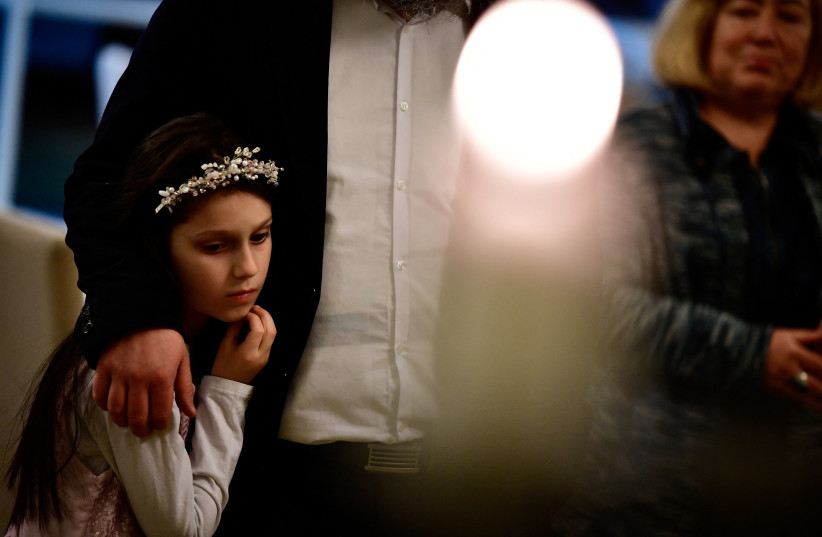An elderly man in a community of Hasidic Jewish refugees from Ukraine lit the first candle of Hanukkah in their rescue shelter in Hungary, which is home to around 150 people on the shores of Lake Balaton.
Saul Melamed, who first fled from Donetsk to Kyiv years before the Russian invasion, sang at the solemn candle lighting with families standing around as they celebrated their first Hanukkah away from their homeland.
"I think materially it is different here because in our home we had very beautiful Hanukkah of silver... but on the other hand here we have such a community, such a warm atmosphere of Hanukkah," Melamed said on Sunday, smiling.
"I'm still hoping to go back to Ukraine, I can't be as optimistic as to say that it will end till the next summer, it seems to be a long time story, but still my plans are to return."
"Machne Chabad", the kosher Rescue Village for Ukrainian Jewish Refugees in the small town of Balatonoszod, is run by the Association of Hungarian Jewish Communities and the Federation of the Jewish Communities of Ukraine. It is the largest Jewish rescue camp in Europe, open to any Jews fleeing the war in Ukraine.
The camp provides shelter, kosher food, a synagogue, and a community to maintain Hasidic traditions and religious life. It accommodates people at a cost of $20-30 per person per day which is financed by donations mainly from the United States on the site of a former summer resort for communist leaders.
Many Jewish refugees fleeing Ukraine amid war
Around 2,000 people have passed through the camp, some stopping over before setting off to Israel, western Europe or the US, and other families settling in for the long term.
Thriving Jewish religious life in Ukraine has been shattered by the war. More than half of its communities have been evacuated, finding refuge around Europe and Israel.
Hasidism had its cradle in Ukraine dating back 300 years and Ukraine had one of the largest Jewish communities in Europe before the war, estimated at between 250,000-500,000 mostly Hasidic Jews.

